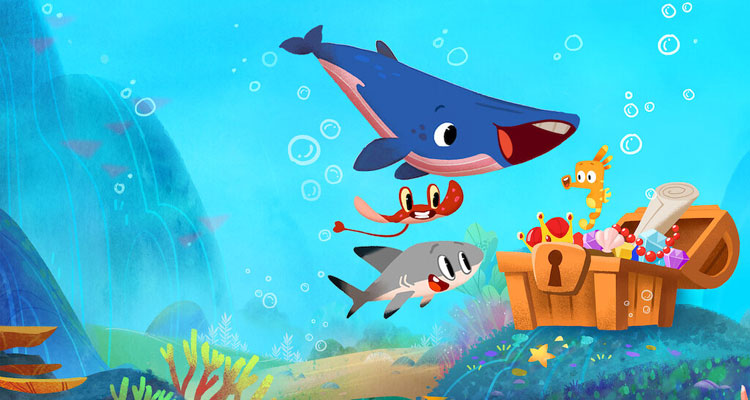Kids content and animation has become the axis of Netflix roll out in Asia, especially after a report provided by the digital major revealed that 60% of households which have Netflix watch children and family content every month.

A Forbes article highlights that over the last quarter, the streamer released Sea of Love, its first Thai original for pre-schoolers, alongside the success of Mighty Little Bheem: I Love Taj Mahal, or the Korean children’s film Larva Pendant, receiving 3.09 million viewing hours within a week of its release
‘Asia has an extremely large youth audience, both on a relative and absolute basis, so creating shows that are engaging and resonant with kids and families in the region is quite important,’ says John Derderian, head of animation series at Netflix to Forbes, and highlights that ‘Netflix is still a relatively new entertainment brand across Asia, and we’ve had a limited time to establish our relationship with kids and parents,’Derderian says. ‘Over time, our goal is to grow the reputation of Netflix as a safe and trusted space where kids can relax, play, learn, and explore alongside their favorite characters.’
Prior to its current iteration on Netflix, Indian show Mighty Little Bheemdebuted on India’s Pogo TV in 2008. It saw widespread popularity among India’s young audiences, producing spinoff films, games and merchandise. After Netflix picked up the IP to create Mighty Little Bheem, development began in July 2017, with Green Gold Animation’s Hyderabad and Mumbai teams working on the show for 18 months.
The number of SVOD subscribers in Japan grew to 49.4 million in Q3, with Prime Video still the leading player in the market, followed by Netflix and then Disney+ ascending to third place, per new data from Media Partners Asia (MPA).

In other territories like Japan, animation has been key for VOD services as well: Japan Online Video Consumer Insights & Analytics reports that Disney+ ended Q3 with 3.6 million subscribers, behind Prime Video’s 16.5 million and Netflix’s 7 million and displacing Hulu Japan as the third-largest platform in the market. Disney+’s gains were driven by its kids’, Korean and U.S. franchise brands. Other key local SVOD platforms include U-Next and Abema TV. The local broadcast TV consortium TVer leads local AVOD.Japanese anime continues to dominante premium online consumption, taking a 44 percent share in the quarter, followed by Japanese live action at 18 percent. Korean series scored a 14 percent share, ahead of U.S. series at 10 percent and U.S. movies at 7 percent.







